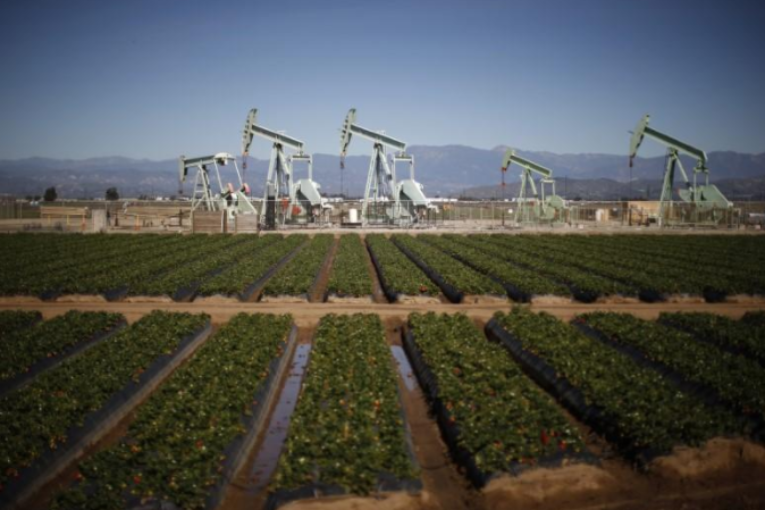
NEW YORK (Reuters) – U.S. oil prices hit their highest levels in more than two years on Friday after the continued shutdown of a key pipeline running from Canada to the United States was expected to reduce supply into a major storage facility.
U.S. West Texas Intermediate crude futures (WTI) hit $58.92 a barrel, their highest since July 2015, before easing to trade up 79 cents on the day at $58.81 by 11:50 a.m. EST (1650 GMT).
Trading activity and volumes were fairly low on Friday due to the U.S. Thanksgiving holiday.
Benchmark Brent crude was trading up 1 cent at $63.56 a barrel.
TransCanada Corp (TRP.TO)’s 590,000 barrel-per-day Keystone pipeline, linking Alberta’s oil sands to U.S. refineries, shut on Nov. 16 after a spill was found in South Dakota.
It is not clear when the pipeline would return to operation, but it carries a large portion of crude into Cushing, Oklahoma, the delivery point for WTI futures, so its shutdown means fewer barrels going into storage.
The spread between the prompt and second month WTI futures, an indicator of supply-demand balances at Cushing, also traded up to 10 cents in backwardation where prompt barrels are more expensive.
“We’re expecting to continue seeing draws out of Cushing, which turned the WTI market into backwardation,” said Tariq Zahir at Tyche Capital Advisors, referring to a market structure where prompt prices are higher than those in the future.
“But all of these gains could go right down into the tubs a week from today if Russia says they don’t want to go along with any OPEC deal. Or, if we get grumblings from Iraq or Iran,” he added.
Markets have also tightened globally due to output cuts since January by the Organization of the Petroleum Exporting Countries, Russia and several other producers.
OPEC meets on Nov. 30 and is expected to extend the pact to curb supplies beyond its expiry in March, although Russia has sent mixed signals about its support for an extension.
“With the majority of OPEC members endorsing an extension, Russian support is the key risk,” Jon Rigby, head of oil research at UBS, wrote in a note.
President Vladimir Putin indicated in October that Russia backed extending the deal to the end of 2018, but comments by officials and in the Russian media have created uncertainty since then, he said.
J.P. Morgan said a decision on any extension could be delayed until next year if Brent stayed above $60.
However, rising U.S. oil production has curbed crude price gains, as it fills some of the gap left by OPEC and its allies. U.S. output has jumped by 15 percent since mid-2016 to a record 9.66 million bpd, thanks largely to shale drilling.
You can read more of the news on source



